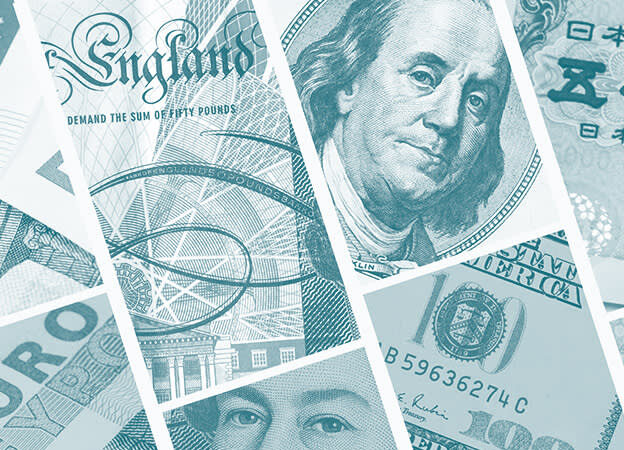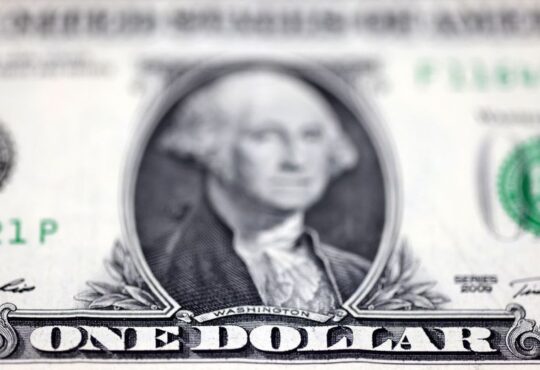
Some holdings in a portfolio are weird basically because they are not there just to make money; and that does, indeed, seem odd. Why else would someone hold an investment other than to make money?
The answer is because, as any economist will tell you, not losing money is the same as making money. If I avoid the loss of £X, then I am £X better off than I would have been, all else being equal. In effect, therefore, I have gained £X.
And this is more than a contrivance. In a portfolio of securities, where values are rising and falling roughly in a uniform, though unpredictable, fashion, it is good to add some assets whose values tend to move independently of the others; to rise when the others fall, or just to remain stable. It preserves value; in effect adding value when otherwise there would have been a drop. Of course, like any benefit, it comes with a cost. Independent movement can mean some values fall when the group as a whole rises, thus reducing the gains that would have been.
Roughly speaking, it is on this logic that modern portfolio theory was built in the 1950s by Harry Markowitz, who died late last month aged 95. Markowitz took the presumption that investors care about risks as well as rewards. If they didn’t, he reasoned, they wouldn’t bother to diversify. Therefore the question becomes, how to diversify efficiently?
Don’t put all your eggs in one basket is decent advice. But, for the purposes of reducing portfolio volatility, some eggs do a better job than others. Markowitz formalised that notion mathematically into the mean-variance analysis of securities. He showed that efficient diversification reduces portfolio volatility without reducing average returns. Meanwhile, any drift from efficiency would either lower returns without reducing risk or raise risk more than returns.
It sounds simple and obvious, although its application is messier than the theory because the ‘expected’ returns on which portfolio theory is built have an annoying habit of turning out to be very different from what was expected. Even so, its implications are huge and earned Markowitz a share of the 1990 Nobel Prize in economics.
It may say something about the comparative zeal for capitalism on the respective sides of the Atlantic that his death prompted fulsome obituaries in the US media but barely got a mention in the UK. That’s an aside. Meanwhile, this week’s focus is on those investments that fulfil this risk-reduction function, but in a particularly passive way. Specifically, that means currencies, although commodities as a whole might also come under this heading.
The underlying factor is that too often investors have too big a concentration of assets in their domestic currency, which, for our purposes, means sterling. It is not just that their equity and fixed-interest investments will mostly be UK-domiciled since many UK-listed companies make significant amounts of revenue overseas and that, in effect, brings some currency diversification to their shareholders. On average, the component companies of the FTSE 100 index are reckoned to generate about 40 per cent of their revenue overseas. Obviously, for some the fraction is much higher. For instance, two holdings in the Bearbull Income Portfolio – Victrex (VCT) and Anglo American (AAL) – both make almost all their revenue abroad.
Yet the factor that virtually guarantees excess exposure to the domestic currency is that, for private investors, their biggest asset is still most likely to be their home, whose value, by definition, will be denominated in sterling. Therefore, sterling’s declining value on the international stage – or even the possibility of that decline – should be hedged. The fact that exchange-traded funds make currency hedging so easy makes this all the more an imperative.
It also raises the question, how much hedging; what proportion of a portfolio should be set aside for holdings in overseas currencies? The answer is subjective, but it is relevant that currencies are comparatively passive investments, so their ability to offset losses elsewhere in a portfolio is limited.
Take, for example, changes in the value of the pound relative to the US dollar, the most likely currency hedge a UK investor will make. Since this investor will be switching pounds into dollars, it is the dollar’s buying power (£ per $) that matters in Table 1. This shows that over the 10 years to end-June the spread between the biggest 12-month gain and the deepest loss is 39 percentage points. That’s muted compared with the 74 percentage point gap between the best and worst share price changes for drinks distributor Diageo (DGE), chosen simply because intuition says its price movements would be average. More encouragingly, however, it is usefully wider than the best and worst performance of the UK Land Registry’s house price index, which is just under 14 points. True, house prices and the dollar tend to rise together, but that’s basically because house prices virtually always rise measured in nominal British pounds, and the dollar rises more than it falls against sterling.
| TABLE 1: SOME HEDGING DATA | ||||
|---|---|---|---|---|
| $ per £ | £ per $ | House price index | Diageo | |
| Biggest gain (%) | 15.0 | 26.1 | 14.2 | 45.3 |
| Deepest loss (%) | -20.9 | -13.1 | 0.6 | -28.4 |
| Spread (% points) | 35.9 | 39.2 | 13.6 | 73.7 |
| Average change (%) | -3.0 | 3.8 | 5.5 | 8.4 |
| End-month year-on-year change, 10 years to June 2023. Source: FactSet | ||||
Within the context of this exercise, there is more than just sterling’s rate against the dollar to consider. The other major currencies come into consideration, and then there is the Swiss franc, which might be viewed as having special stability, the nearest that a fiat currency gets to behaving like gold.
Actually, the currency movements that prompted this train of thought concern the Japanese yen, which has been dropping against sterling for almost three years now, falling over 30 per cent in the process. The irony here is that this consistent weakness has eroded all of the gains that would have accrued in the past two years to sterling-denominated investors who bought the equivalent of Tokyo’s Nikkei 225 index (see the chart). In its local currency, the Nikkei has risen 16 per cent since July 2021, but in sterling it is 3 per cent lower.
Pity because, as Table 2 shows, over the past 12 months the Nikkei has been a star performer. Of the major country, regional and global equity indices shown, the Nikkei is the only one currently posting year-on-year gains, and it is 17 percentage points ahead of its nearest challenger, the UK’s FTSE All-Share index. Sure, this may simply be a case of two of the dogs of the developed world’s equity markets having their day. In that context, it’s always worth recalling that, whatever the applause when the Nikkei index crossed the 30,000 threshold in May, it was just a short distance from 40,000 almost 34 years ago.
| TABLE 2: NIKKEI ON TOP OF THE WORLD | |||
| Index | Ch on 1 yr (%) | Ch on 3 yrs (%) | Ch on 10 yrs (%) |
| Nikkei 225 | 13 | 37 | 212 |
| FTSE All-Share | -4 | -3 | 31 |
| MSCI World | -5 | 30 | 149 |
| S&P 500 | -5 | 39 | 216 |
| MSCI Europe ex-UK | -6 | 14 | 79 |
| Hang Seng | -17 | -31 | -14 |
| CSI 300* | -21 | -5 | 55 |
| Source: FactSet; Price return (local currencies); *China Securities Index | |||
Meanwhile, some factors that have propelled Japan’s equity prices may soon resuscitate the yen. True, there was a rock-bottom, basic value investment argument in favour of equities since about half of Tokyo’s non-financial listed companies held net cash on their balance sheet yet, more likely than not, had a market value below their book value.
Simultaneously, the much-delayed post-Covid reopening of Japan’s economy, allied to efforts to boost output, is stirring a moderate amount of inflation into the system. Japan’s consumer prices are now rising at about 2 per cent on the year, very welcome after deflation for most of the past 10 years.
True, the Bank of Japan seems to be in no rush to tighten its ultra-loose monetary stance, but at some stage it will have little choice but to go where the rest of the developed world’s central banks have gone. The related question is, when will currency markets anticipate that change of direction? And for those holding Japanese yen, there is the hopeful thought that soon enough the yen will resume its intended function of staunching losses elsewhere in their portfolio.
—————————————-
Bearbull Income Portfolio Update
The good news is that the dividend distribution by the Bearbull Income Portfolio for the first half of the year was higher than a year earlier. The bad news is that the good news isn’t really very good. As Table 2 shows, the £4,876 payout was only 1 per cent higher than 2022’s first half and 9 per cent short of 2021’s corresponding amount. Go back to that land of lost content before Covid-19 spread westwards and, for six years running until 2020, the portfolio distributed over £6,000 every first half.
| TABLE 3: BEARBULL INCOME PORTFOLIO DISTRIBUTIONS | |||||
| Year ended | Pay out (£) | Change on year | Fund yield (%) | Cumulative pay-out (£) | |
| 2021 | 1st half | 5,342 | 2% | 4.1 | 223,865 |
| 2nd half | 7,639 | 44% | 5.5 | 231,504 | |
| Total | 12,982 | 23% | 4.8 | ||
| 2022 | 1st half | 4,821 | -10% | 3.4 | 236,325 |
| 2nd half | 6,669 | -13% | 5.2 | 242,994 | |
| Total | 11,489 | -11% | 4.3 | ||
| 2023 | 1st half | 4,876 | 1% | 3.8 | 247,870 |
| Source: Investors’ Chronicle | |||||
The specific factors behind 2023’s underwhelming performance were no repeat of a special dividend from Anglo American and the effect of a loudly-signalled dividend cut at GSK (GSK) which followed the disposal of its consumer healthcare business. Together, the absence of these two cost the fund about 13 per cent of what it would have paid out all else being equal; except ‘all else’ is rarely equal – special factors are such a familiar part of investing they cease to be special.
For the second half, the distribution is unlikely to be much more than last year’s equivalent. That would produce a portfolio yield of about 4.3 per cent with the fund at its current value. That compares with a likely yield from the FTSE All-Share index for 2023 of about 4 per cent. Frankly, however, if the portfolio’s yield fell short of that because its value got a boost, I would be quite happy. Like so many income investors, I yearn for something more in the way of capital gains.






